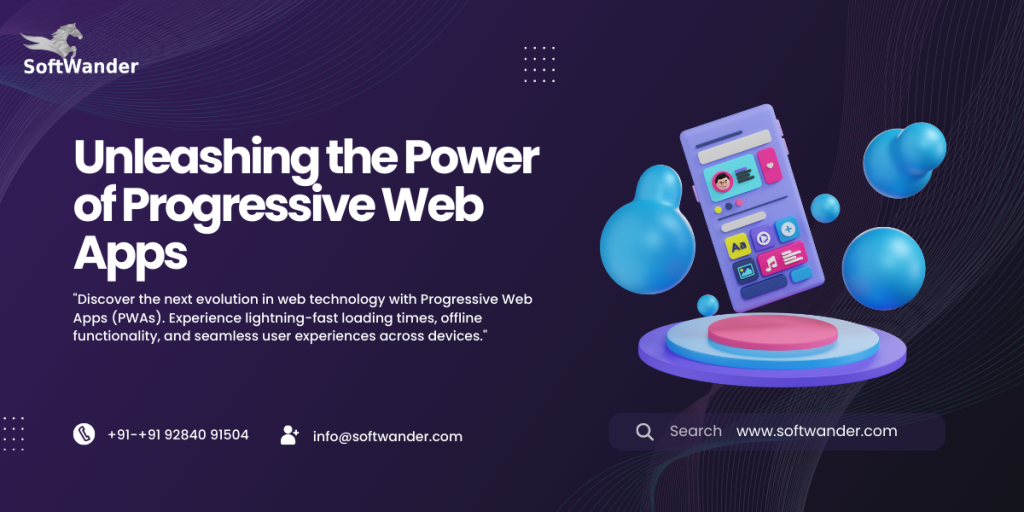
Unleashing the Power of Progressive Web Apps (PWAs)
Introduction:
In the ever-evolving landscape of web development, Progressive Web Apps (PWAs) have emerged as a game-changer, revolutionizing the way users interact with websites and applications. Blurring the lines between traditional websites and native mobile apps, PWAs offer a seamless and engaging user experience across all devices. In this blog, we’ll explore the concept of PWAs, their benefits, and how they are reshaping the future of web development.
What are Progressive Web Apps (PWAs)?
Progressive Web Apps are web applications that leverage modern web technologies to provide users with a fast, reliable, and engaging experience. Unlike traditional websites, PWAs offer features commonly associated with native mobile apps, such as offline functionality, push notifications, and home screen installation. Built using HTML, CSS, and JavaScript, PWAs are designed to be responsive, lightweight, and accessible on any device or platform.
Key Features of PWAs:
- Responsiveness: PWAs adapt seamlessly to different screen sizes and device capabilities, providing a consistent user experience across desktops, smartphones, and tablets.
- Offline Functionality: PWAs can work offline or with a poor internet connection, thanks to service workers that cache essential resources and enable offline access to previously visited content.
- App-like Experience: PWAs mimic the look and feel of native mobile apps, offering features such as app icons, splash screens, and fullscreen mode for a more immersive user experience.
- Push Notifications: PWAs can send push notifications to users, allowing businesses to re-engage with their audience and deliver timely updates or promotions.
- Installability: Users can add PWAs to their device’s home screen with just a few clicks, making them easily accessible and increasing user engagement.
- Fast Loading Speed: PWAs are optimized for performance, with faster loading times and smoother navigation compared to traditional websites.
Benefits of PWAs:
- Improved User Experience: PWAs offer a seamless and engaging user experience, leading to higher user satisfaction and retention rates.
- Increased Reach: PWAs are accessible on any device or platform with a web browser, eliminating the need for separate development and maintenance of native apps for different platforms.
- Cost-effectiveness: Developing a PWA is often more cost-effective than building separate native apps for iOS and Android, as it requires a single codebase and fewer resources.
- Enhanced Performance: PWAs are optimized for performance, with faster loading times, smoother navigation, and better responsiveness compared to traditional websites.
- Offline Access: PWAs can function offline or with a poor internet connection, allowing users to access content even in areas with limited connectivity.
Examples of Successful PWAs:
- Twitter Lite: Twitter’s PWA offers a lightweight version of its app that loads quickly and works seamlessly even on slower networks.
- Starbucks: Starbucks’ PWA allows users to browse the menu, customize orders, and locate nearby stores, all without downloading a separate app.
- Pinterest: Pinterest’s PWA offers a fast, immersive experience that allows users to discover and save ideas effortlessly.
- Uber: Uber’s PWA provides a streamlined booking experience for users, allowing them to request rides and track drivers in real-time.
- Trivago: Trivago’s PWA offers a fast and intuitive way to search for hotels, compare prices, and book accommodations on the go.
Conclusion:
Progressive Web Apps represent the future of web development, offering a compelling alternative to traditional websites and native mobile apps. With their ability to deliver fast, reliable, and engaging experiences across all devices, PWAs are empowering businesses to reach a wider audience, increase user engagement, and drive conversions. As the demand for seamless digital experiences continues to grow, PWAs are poised to play a central role in shaping the future of the web.
